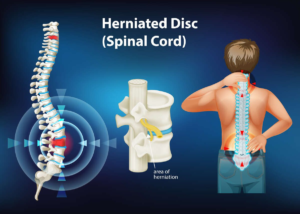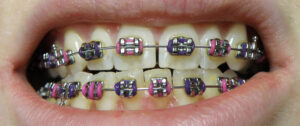Baltimore Eye Physicians play an important role in society and are highly respected by their patients, peers, and the public. They work with patients of all ages, across a wide range of healthcare specialties. Physicians often have a high degree of job satisfaction because they see a direct impact on the lives of their patients. Providing critical medical care is an incredibly challenging and fulfilling career choice.
Patient Care and Follow-Up

Physicians meet with their patients to assess their condition, answer questions, and schedule follow-up appointments. They also collaborate with other healthcare professionals to provide comprehensive care, including nurses, therapists, and dietitians. They refer patients to specialists and seek second opinions when necessary.
Doctors communicate complex medical concepts in a clear and understandable manner, ensuring that patients fully comprehend their diagnoses and treatment options. They also educate their patients on how to prevent illnesses and promote healthy lifestyles. Some physicians also teach medical students in teaching hospitals.
Medical Record-Keeping
Doctors maintain accurate and detailed medical records for each of their patients. This includes documenting the patient’s medical history, examination results, diagnostics, treatment plans, and medication prescriptions. They must also abide by relevant privacy regulations when handling patient data.
Physicians must abide by strict codes of conduct and practice according to peer-reviewed scientific evidence and established guidelines set forth by their specialty boards. If a physician wishes to deviate from these guidelines, they must make their decision based on clinical experience and informed judgment.
Helps People Live Better
Physicians not only treat their patients, but also help to build and maintain healthy communities. They invest in their patients through health education and outreach, dispelling myths about different types of medicine, diseases and treatments. They mentor students that aspire to become doctors, giving them wisdom and guidance on continuing great patient care in the future. They also invest in their communities through humanitarian efforts, such as providing medical care in rural areas and overseas with organizations like the American Red Cross and Doctors Without Borders.
Physician specializations allow them to focus on certain aspects, areas and functions of the body. For example, physicians may specialize in foot problems (podiatrists), digestive issues (gastroenterologists) or plastic surgery (plastic surgeons). Their expertise allows them to better understand the conditions that affect each individual and provide their patients with effective treatment.
A study published in the International Journal of Health Services found that primary care physicians increase their patients’ life expectancy, especially those living in poorer neighborhoods. These physicians help their patients access the resources they need to be healthy, including food, housing and transportation, while also ensuring that they’re getting regular screenings and adequate healthcare maintenance.
In addition, community partnerships with local churches and mosques and “third places” such as barbershops have shown to be powerful in helping to bridge the gap between health disparities and social determinants of health in underserved areas. Physicians can also integrate advocacy into their daily practice by learning how to recognize the social determinants of health, confront bias in their practices and develop processes that promote health equity.
While racial, gender and other health disparities are due to societal factors, a number of studies have linked these disparities to physician behavior and attitudes. Physicians must learn to recognize and address their own unconscious biases in order to advance health equity for all their patients.
While the benefits of a physician’s work are undeniable, the profession can be difficult and demanding. Physicians often work long hours, and must complete rigorous training and licensing requirements before they can begin their careers. They must also stay current with the latest advances in medicine and technology, and are liable for malpractice lawsuits if they don’t keep up to date with medical knowledge and best practices.
Contributes to Medical Innovation
The medical field is always changing, and physicians have a unique perspective on healthcare. They’re at the forefront of many innovations, such as advances in lab testing and treatment methods. They also have the advantage of being able to draw on shared knowledge in their networks, including colleagues from other hospitals and medical schools, nurses, PAs and pharmacists.
Medical professionals need to stay current with all new developments and technologies so that they can best serve their patients. There are a few ways that they can do this, including attending conferences and joining social networking platforms like Doximity. Medical professionals can also learn by watching others’ work, such as through a mentorship program with a successful innovator.
There are a number of ways that medical professionals can contribute to innovation, such as by serving on the board of a start-up or participating in clinical trials. They can also use their professional networks to identify potential solutions and partners. Finally, they can collaborate with peers to bring their ideas to life.
Medical innovation is a complex process, and there are many critical steps to take from ideation to commercialization. Those steps include engineering, design, protection of intellectual property and clinical testing, to name just a few. Creating these innovations requires the collaboration of physicians, as well as a deep understanding of medical needs and existing technology.
One of the most important things that physician innovators can do is to be open to change and recognize when a new idea is worth pursuing. Many of the most innovative ideas look promising in isolation, but they may not translate to the real world if they’re impeded by established protocols, patient preferences or regulatory barriers.
The best way for physicians to stay current with innovation is through cross-sector engagement, which can lead to more collaborative research and development activities. However, it’s important for medical researchers to understand the challenges that must be overcome to facilitate collaboration between physicians and industry. Several mechanisms are available to support this type of engagement, and it’s essential for all stakeholders to work together to increase their availability and effectiveness.
Many Opportunities
Physicians are not only able to diagnose and treat illness and injury, they are also able to provide preventive care such as vaccinations and health screenings. This helps to improve overall patient outcomes by preventing illness and injuries in the first place, which saves lives and money.
In addition to the medical aspects of their job, physicians also have other responsibilities such as administration, research and education. These responsibilities are crucial for the success of a health care institution and its patients. Physicians have the opportunity to shape the direction of a healthcare facility and can make a positive impact on society through their contributions.
Although many physician job seekers go into medicine fully expecting to practice clinically for three decades, there are a number who decide they want to branch out or change careers. According to 2022 CHG Healthcare research, 43% of physicians changed jobs and 8% retired during the COVID-19 pandemic. This shift in the workforce was largely due to the significant increase in burnout and stress during the pandemic.
For those physicians seeking to transition into nonclinical work, there are numerous options available both as side gigs and permanent positions. Physicians can find work in the pharmaceutical industry, medical technology companies, insurance firms and even as consultants. Some of these positions may pay on par with a physician’s salary while others might be lower earning.
Nonclinical opportunities can also provide physicians with the chance to work flexible schedules and enjoy a less stressful environment. This may be important for those who are experiencing burnout, as they can have a more balanced life and focus on their mental health and wellbeing.
Finally, some physician job seekers are taking advantage of telehealth opportunities, which allow them to earn money while working remotely from home or the office. This allows them to be more flexible in their scheduling and provide patients with access to healthcare when they might not otherwise be able to get it, such as because of doctor shortages in their area or a physical barrier.
As the demand for physicians continues to grow, it’s important that healthcare organizations prioritize supporting their core staff by ensuring they offer competitive compensation rates. This will help to retain physicians and attract new talent, which will ultimately benefit the health care system and its patients.





